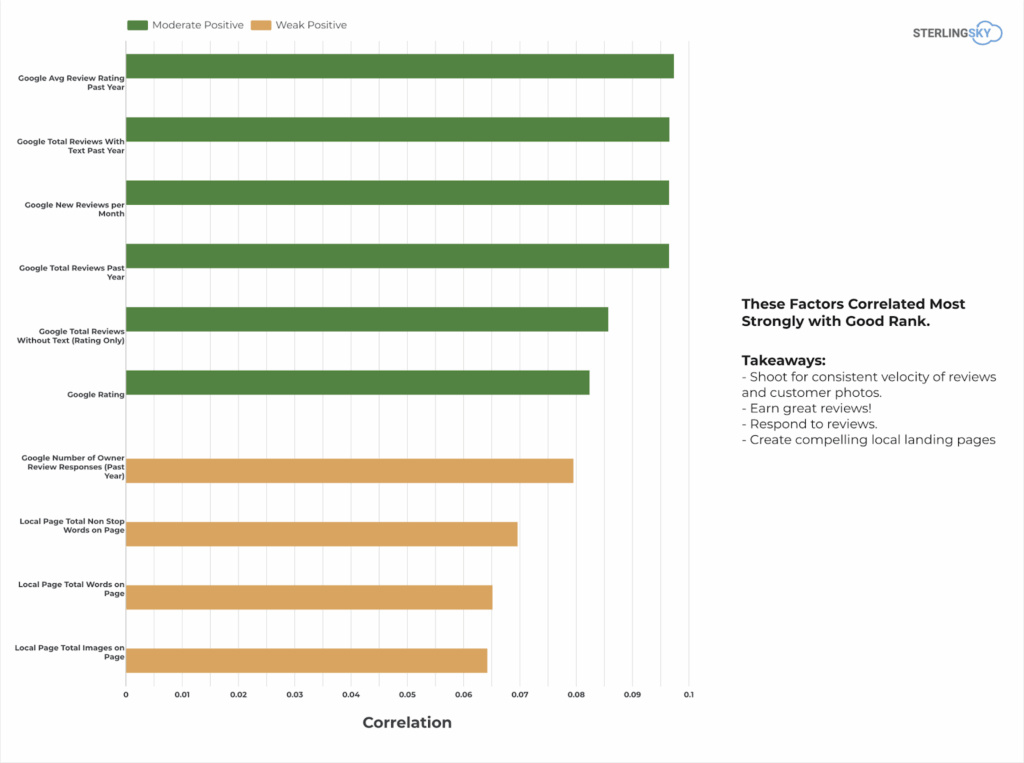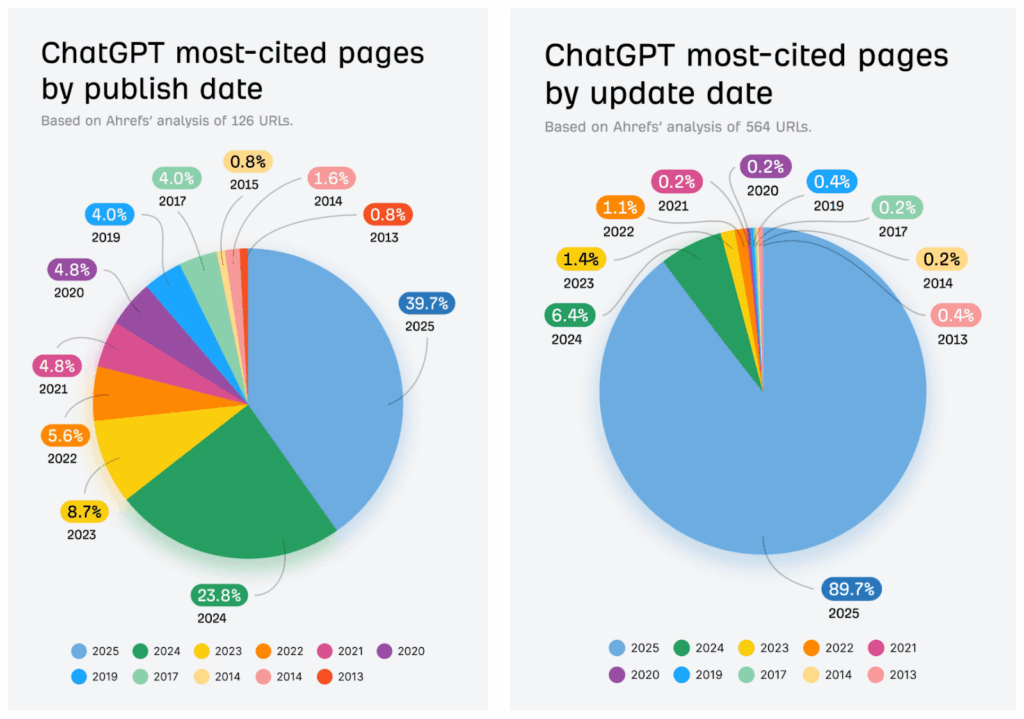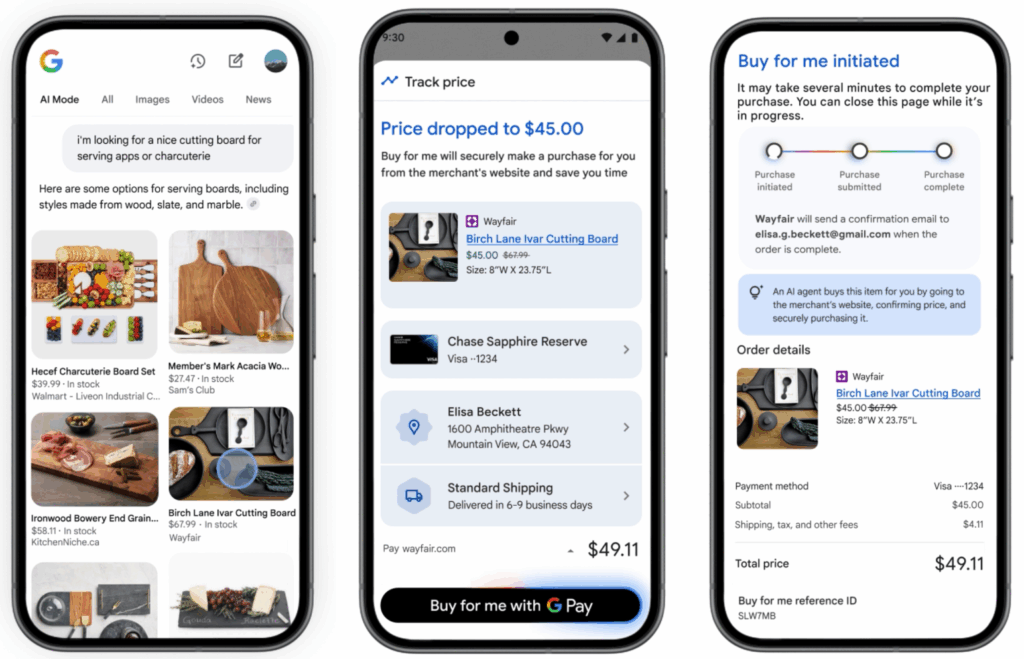Local Memo: New Ranking Factor Studies Highlight the Value of Reviews, More Evidence LLMs Favor Freshness, Google Releases New Agentic Features in Time for the Holidays
Summary
New studies confirm that frequent, fresh reviews drive higher local rankings, while AI tools like ChatGPT favor recently updated content. Google’s new agentic shopping features highlight the growing need for real-time, accurate local data and seamless online-to-offline experiences.
More Ranking Factor Studies Highlight the Power of Reviews
The News: With Whitespark’s publication of the long anticipated 2026 Local Search Ranking Factors survey earlier this month, we almost missed two other strong data-driven local ranking studies from respected local sources that do a fantastic job of highlighting the critical importance of review signals in determining how you rank against your competitors.
The first study comes from Joy Hawkins at Sterling Sky, who analyzed over 8,000 businesses across 200 cities to see what drives “near me” rankings in 2025. While the study makes clear no single factor holds the key to ranking supremacy, review signals like rating, volume and recency were the clear winners.
A key finding was that businesses who consistently earned fresh, detailed reviews outperformed those with older or fewer ones even if their average rating wasn’t as high. In short, steady review activity matters more than sheer volume, making ongoing customer feedback key to local visibility.
Another, more industry focused, data-backed study from Greg Gifford at SearchLab reached similar conclusions after an analysis of 3,200 PI law firm GBPs across 20 major U.S. cities, noting: “review volume is one of the clearest differentiators between firms at the top of the map pack and those further down.”
The data also validated Joy’s findings on recency, with firms ranking in the top spot earning 28% more monthly reviews than the industry average.
What This Means for Multi-Location Brands: Any reputation improvement plans should not only include goals for targeted growth, but for continued organic growth after those goals are achieved. Be sure you are not only using tools, like GeoRank, to set those competitive targets for rating and volume, but also employing strong reputation management tools that also monitor the frequency at which those reviews are being generated.
For LLMs, Freshness is the new Authority
The News: A recent Ahrefs analysis of ChatGPT’s 1,000 most-cited web pages found a powerful pattern: the information most frequently surfaced by ChatGPT isn’t just from established sources, it’s from pages that are consistently updated and maintained.
- 60.5% of cited pages with known publication dates were published within the last two years.
- 76.4% of pages with detectable update data had been refreshed within the past 30 days.
- And nearly 90% of all pages with freshness data carried 2025 update timestamps.
What This Means for Multi-Location Brands: Local pages often rank well because of strong domain authority, but many remain untouched for years and often function more as static directories than as living digital assets. The Ahrefs study underscores the value of keeping that content fresh and timely.
When content is active, it communicates that the business behind it is active, too. For local pages, that might mean quarterly updates to reflect seasonal offerings, refreshed photos, mentions of community events, or short blurbs highlighting recent changes. Even a small “last updated” note can subtly reinforce trust and relevance.
The brands that adapt and show activity at the local level will be the ones whose relevance and authority in local search will continue to grow as discovery in AI becomes more ubiquitous in 2026.
Google Rolls out AI Agents to Help with Holiday Shopping
The News: Just in time for the holiday shopping season, Google has introduced agentic Shopping in AI Mode, a new AI-powered experience that reimagines how people discover and purchase products online. Available in Search and the Gemini app, the feature allows shoppers to describe what they want in natural language and receive personalized, visual results that include side-by-side comparisons, real-time pricing, and local availability.
Drawing on more than 50 billion product listings, Google says this multimodal system “understands complex shopping needs and helps you browse millions of products as if you were talking to an expert.”
Beyond discovery, the new AI powered feature integrates several time-saving tools to simplify the buying process. It can verify stock or promotions at nearby stores using Google’s Duplex technology, send updates via text or email, and even complete purchases through Google Pay at supported retailers like Wayfair, Chewy, and Quince once users give permission. Together, these capabilities reflect Google’s vision for “agentic shopping,” where AI assists from inspiration to checkout.
What This Means for Multi-Location Brands: Google is ushering in a new era where AI doesn’t just inform decisions, it completes them. This new feature emphasizes the importance of accurate location data, real-time inventory, and smooth online-to-offline experiences. As Google’s shopping ecosystem becomes more conversational and automated, businesses that optimize for local relevance and availability will have the best chance to appear in these AI-driven shopping journeys.







